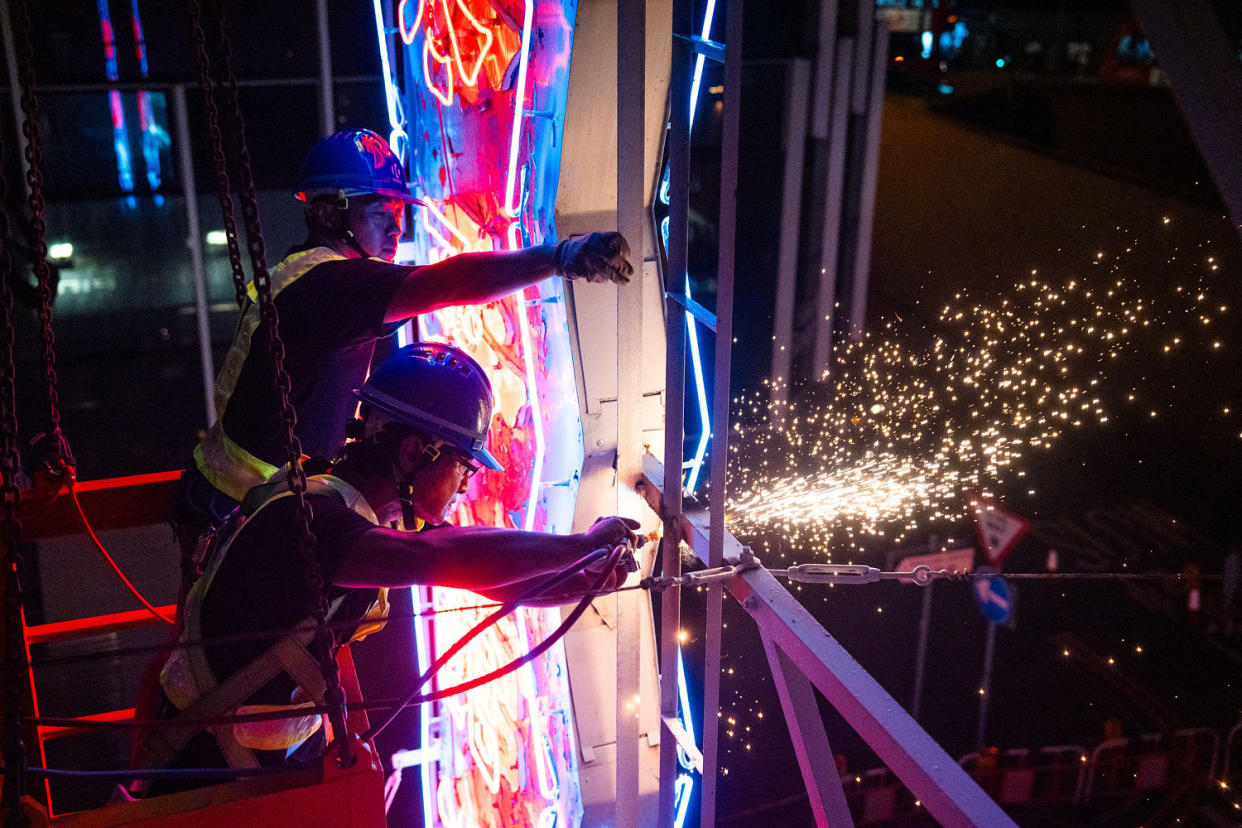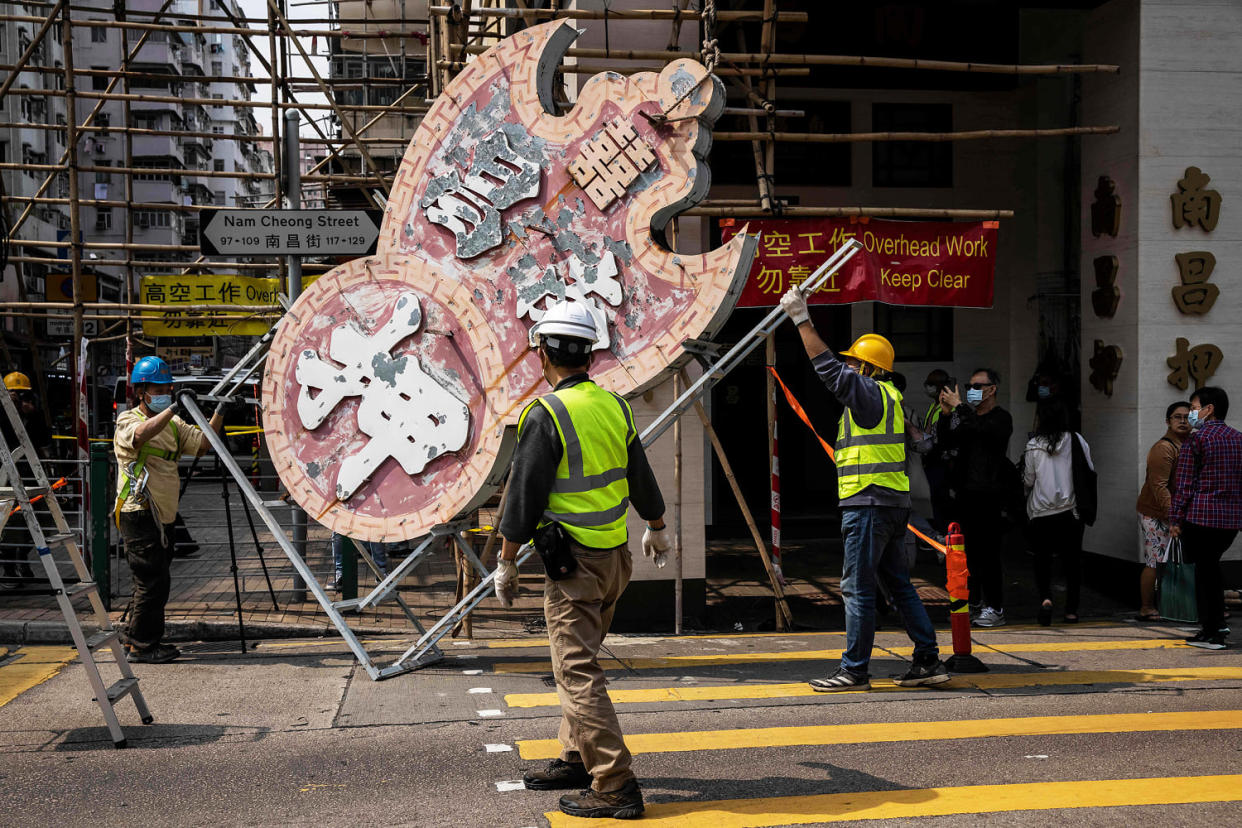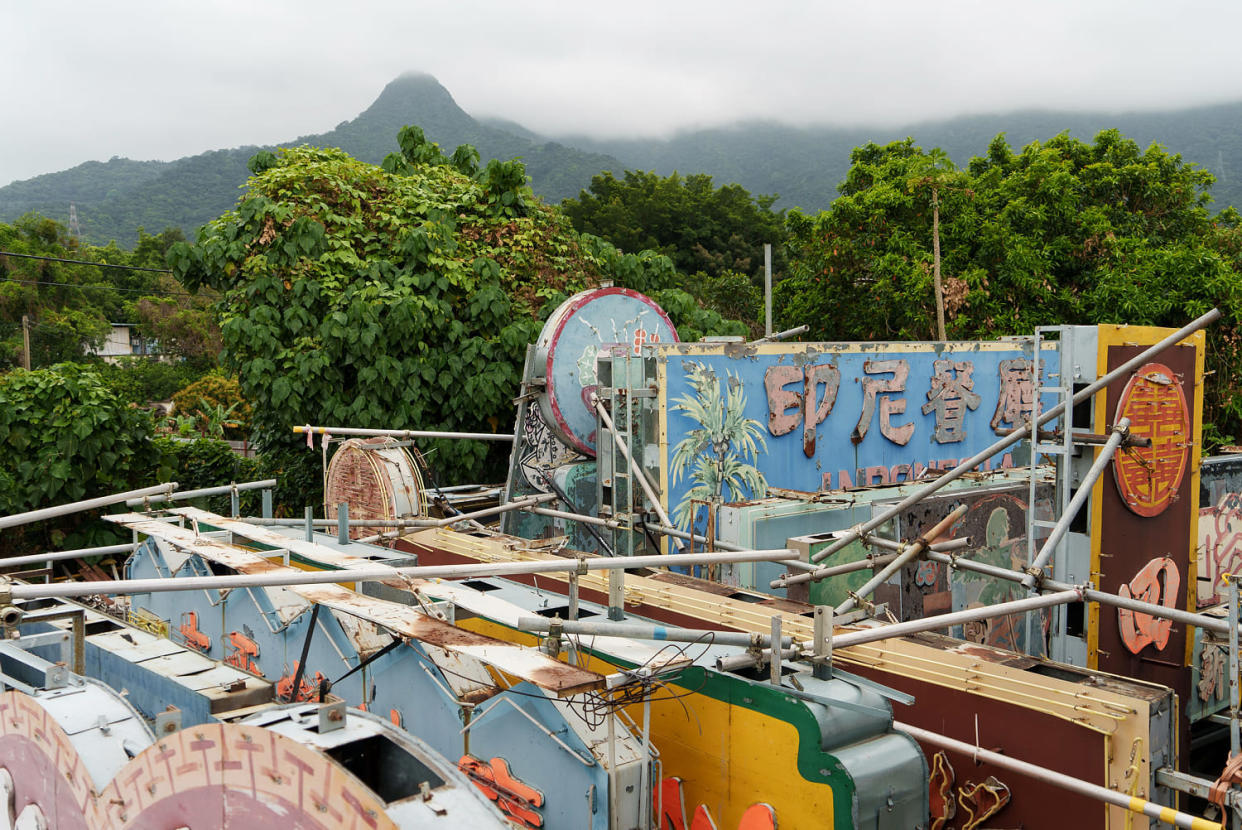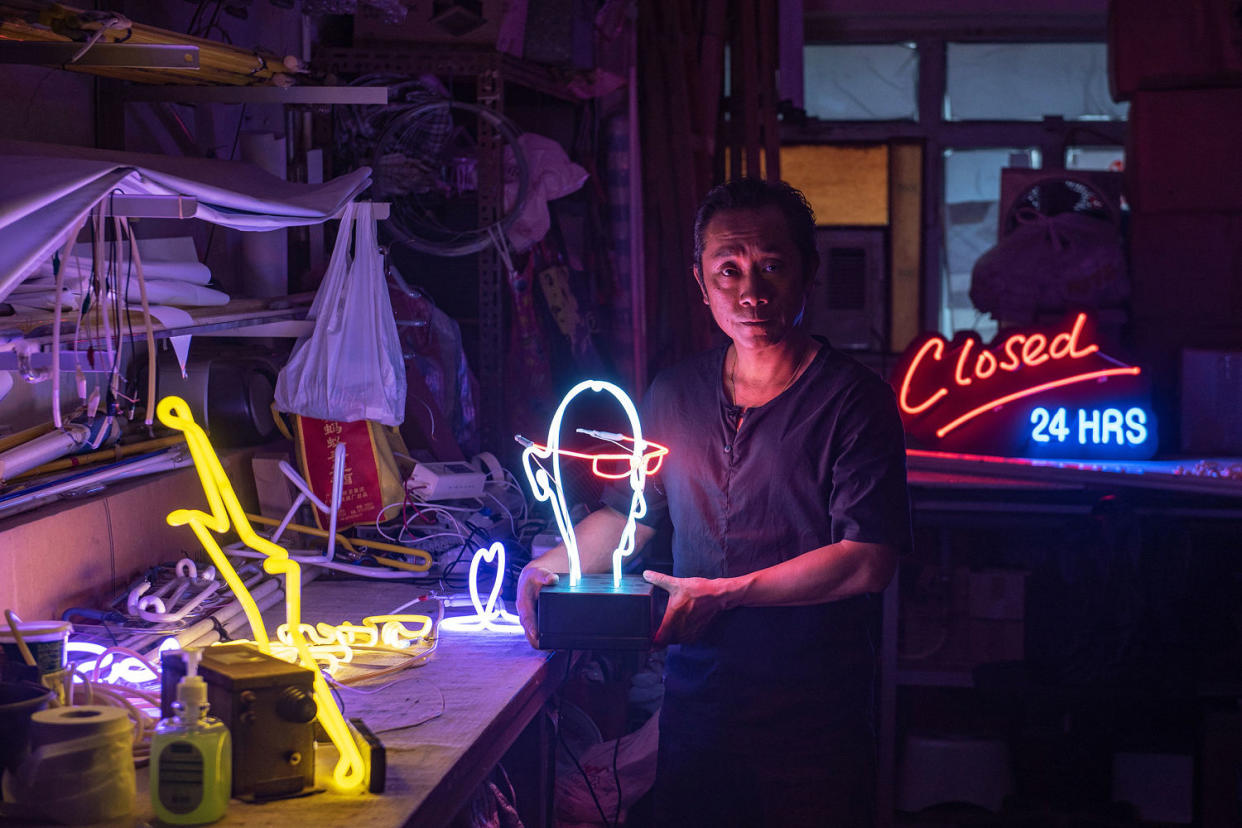The lights are going out for Hong Kong’s iconic neon signs
HONG KONG — Hong Kong’s famous neon signs are becoming harder and harder to find.
The once-ubiquitous signs advertising bakeries, restaurants, pawn shops and more became a symbol of Hong Kong as it transformed into an international financial center in the decades after World War II. They provided the backdrop in films such as “Blade Runner” and local director Wong Kar-wai’s “In the Mood for Love,” and drawing tourists from all over the world.
“So many memories and so many stories have happened nearby or underneath neon signs, it is a common memory to a lot of people and lots of Hong Kong citizens,” said neon sign artist Jive Lau.
The disappearance of neon signs in Hong Kong has been underway for decades, spurred by the availability of cheaper LEDs as well as tightening regulations and enhanced government safety inspections. But some residents see it as contributing to an erosion of the once-freewheeling Chinese territory’s unique identity as it grapples with a crackdown on dissent after months of anti-government unrest in 2019.
Like mainland China, with which its economy is strongly intertwined, tourism-dependent Hong Kong is struggling to recover and lure back visitors after three years of pandemic isolation. The removal of neon signs, critics say, only further saps the city’s energy.
“It’s like makeup to a city,” Lau said. “But now they are ripping it off and cleaning up, it’s not that beautiful anymore.”


Yuen Siu-lam, the owner of Hop Hing Hot Pot, a restaurant in Hong Kong’s Jordan neighborhood, still misses the sign that helped customers spot her family’s business for 30 years. But when the government ordered it removed a few years ago, she agreed that it might present a safety issue.
“It’s only right to take it down because we can’t deny that it might be dangerous for people to walk under it,” she said, adding that the sign was also expensive to maintain and that people can easily find her restaurant through the internet.
Still, there are fewer customers now that the sign is gone, she said, and the street is “slowly decaying” as nightlife shifts elsewhere.
“The street was so colorful, picturesque and vibrant, but now nearly all colors have gone,” she said.

The restaurant’s sign went to Tetra Neon Exchange, a nonprofit group in Hong Kong that is dedicated to conserving neon signs for their artistic and historical value.
“By preserving the signs, we actually preserve and could tell an important part of Hong Kong history,” Cardin Chan, the group’s general manager, said in an interview at its open-air storage yard in the rural town of Yuen Long.
There are no official figures for how many neon signs remain in Hong Kong, where they are also being collected by the M+ art museum.
Chan said her group aimed to give hope to sign owners and makers that it was not yet “sunset” for the neon industry.
“Their fate is not set in stone if we decide to do something about this,” she said.

Wu Chi-kai, a veteran neon sign maker, started in the business at age 18 because his father, who installed neon signs for a living, “wanted me to make good use of my time during my summer holiday.”
“During the ’80s, there was a big demand for more people to work in the neon lights industry, so my boss really pushed me to pursue the job full time,” he said in an interview at his workshop. “That’s how I ended up choosing my career path.”
Wu said that while neon lights were not nearly as common outdoors as they used to be, smaller ones were being used as decorations in stores, restaurants and in people’s homes.
“Unless people stop valuing the beauty of neon lights,” he said, “then I don’t see the possibility of neon lights disappearing from Hong Kong entirely.”
